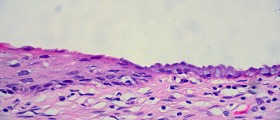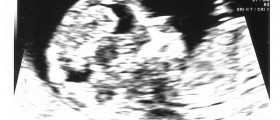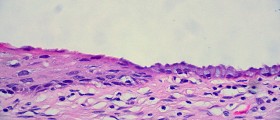
Cancer of the cervix or cervical cancer is one of the most common cancers in women. However, with regular Pap test screening it is possible to detect cervical cancer in early stage when it is easily treatable. In this article we will discuss causes and symptoms of cancer of the cervix.
What Is Cervix?
Cervix is the lower third segment of the uterus (womb). It is a neck of the uterus that connects to vagina. It is a conical-shaped reproductive organ that projects through the upper anterior wall of the vagina.
The cervix has several functions. During menstrual period, it allows menstrual blood to pass from the uterus into the vagina. During pregnancy, the cervix closes to keep the fetus inside the uterus whilst during childbirth it dilates to allow passage of the fetus through the vagina. During sexual intercourse, the cervix produces mucus to help sperm move from the vagina to the uterus.
Cancer of the Cervix
Cancer of the cervix starts in cells on the surface of the cervix. It usually develops slowly and can be detected early with the help of regular Pap smears, even when cervical cells show precancerous changes. On the other hand, undetected changes in these cells may convert into cancer that can spread to distant organs such as lungs, liver, intestines and bladder.
Exact cause of cervical cancer is still unknown, but in most cases it is caused by human papilloma virus (HPV). It is a type of sexually transmitted disease. The virus may lie dormant in the body for years before it causes invasive cancer of the cervix. However, there are also other risk factors for cervical cancer. This includes medical history of sexually transmitted disease, having multiple partners or having sex at an early age. Also, cigarette smoking doubles the risk of cervical cancer. Finally, African American, Native American and Hispanic women as well as middle aged women are more susceptible to invasive cervical cancer.
Symptoms of Cervical Cancer
Initially, cancer of the cervix does not produce symptoms. However, as the cancer progresses symptoms start to appear. This includes abnormal vaginal bleeding and unusual changes in menstrual cycle. Vaginal discharge may be foul-smelling and bloody or yellow. Pain in the lower back, pelvic pain, pain during sexual intercourse and painful urination are also symptoms of invasive cervical cancer.
Treatment for Cervical CancerTreatment for cancer of the cervix depends on the stage of cancer. Cervical cancer is highly curable when detected early. The treatment for early cervical cancer involves removal of cancerous tissue and a patient may be able to have children in the future. For more advanced cervical cancer, the treatment involves removal of the uterus and surrounding tissue in a procedure called hysterectomy. Radiation therapy and chemotherapy are usually also included into the treatment.



_f_280x120.jpg)













Your thoughts on this
Loading...